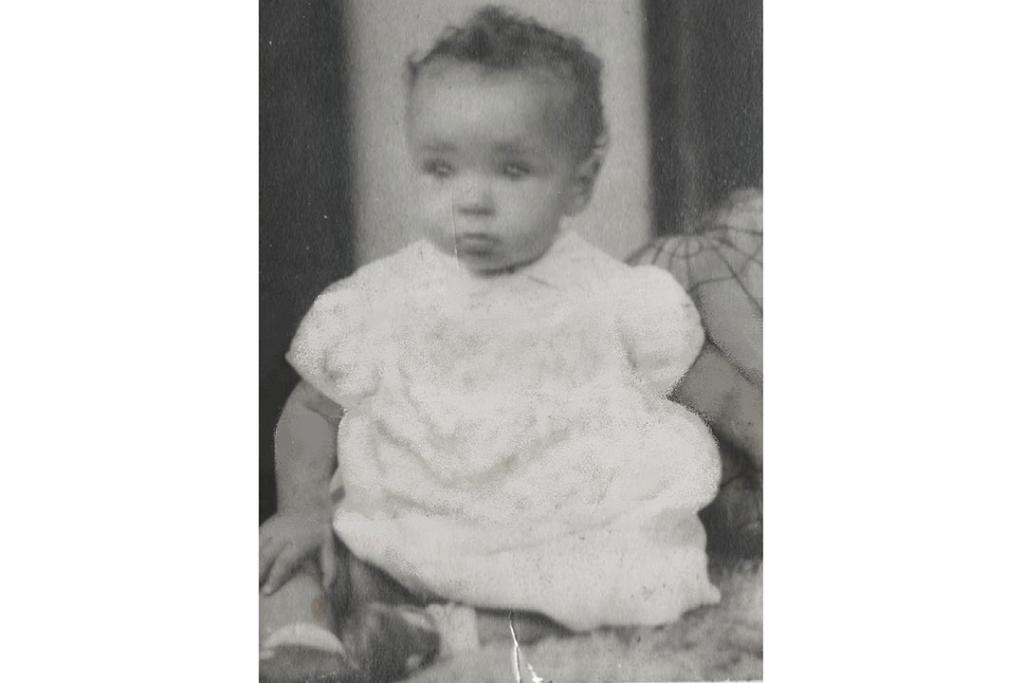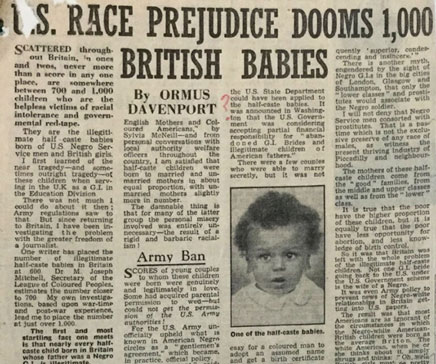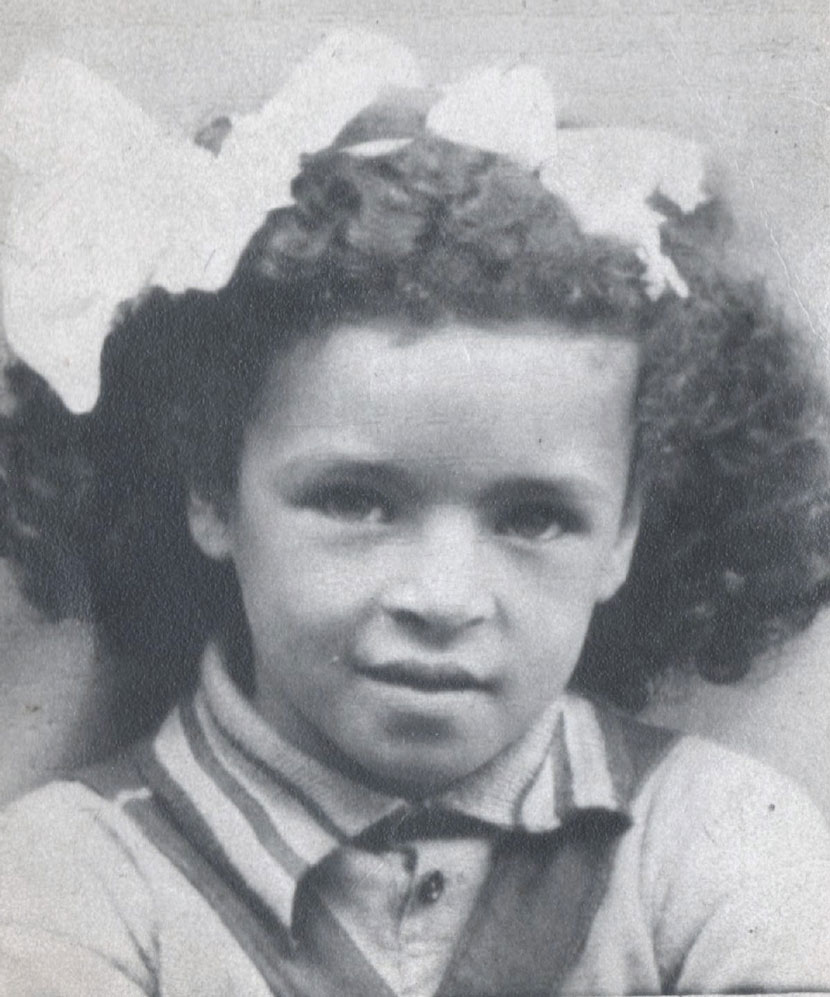‘Brown Babies’ of the Second World War
During the Second World War it is estimated that approximately 2,000 babies were born to Black American servicemen and white British women. ‘Brown babies’ was the term given to these children by the African-American press at the time. Lucy Bland, Professor of Social and Cultural History, Anglia Ruskin University, Cambridge, takes a look at their story.

In January 1942, a month after the US had entered the war, a large number of American servicemen (known as GIs – standing for ‘government issue’) were shipped to Britain. Over the next three years about 3 million GIs passed through the country, of which approximately 8% were African-American.
Many troops, white and Black, disembarked at Liverpool. By the end of 1943, there were about 5,000 Black troops in and around Liverpool at Maghull, Aintree and Huyton – twice the number of white GIs. Many worked at Burtonwood, near Warrington, a large US Army air repair depot (the largest airfield in Europe). Black GIs were in the quartermaster divisions, the maintenance section, in fact all the support work. In Britain they were not allowed to fly.
From the moment the British government knew that US troops would be arriving, there was concern in official circles about the consequences of the presence of Black GIs, not least a fear concerning potential relationships and children with white women. Home Secretary Herbert Morrison, for example, was anxious that "the procreation of half-caste children" (the term of the time) would create "a difficult social problem". To avoid the birth of such children, the government was keen to discourage the mixing of Black troops and local women, proposing that "white women should not associate with coloured men. It follows then, they should not walk out, dance, or drink with them".
These and other government suggestions were collated under the heading, typed in red ink: ‘MOST SECRET’ and ‘TO BE KEPT UNDER LOCK AND KEY’, primarily out of concern that aligning themselves with American policies of racial segregation would cause outrage throughout Britain’s colonies, where millions of Black and Asian men and women were fighting on Britain’s behalf. [1]
In contrast, attitudes of the British public toward Black troops were initially very favourable. Reports from the Home Intelligence Unit (set up in November 1939 to monitor British morale) frequently mentioned people’s appreciation of "the extremely pleasing manners of the coloured troops" [2]. They were seen as less boastful and bumptious than their white counterparts.
However, when British women started having relationships with Black GIs, the Home Intelligence Report in August 1942 noted: "adverse comment is reported over girls who 'walk out' with coloured troops" [3]. If women in relationships with Black GIs went on to have children, they frequently faced a barrage of criticism. By October 1943 the Home Intelligence Unit was mentioning people’s rising concern about "the growing number of illegitimate babies, many of coloured men" [4].
It is estimated that approximately 2,000 ‘brown babies’ were born in Britain during the war and nearly all of them were illegitimate. Every American serviceman had to receive permission to marry from his commanding officer (who in the UK were nearly all white) with avoidance a court-martialled offence. But for a Black GI wanting to marry a white British woman, permission was invariably refused.
According to Black former GI Ormus Davenport, writing after the war, the US Army "unofficially had a 'gentleman's agreement' which became in practice official policy. The agreement said 'No negro soldier or sailor will be given permission to marry any British white girl!'... Not one GI bride going back to the US under the US government scheme is the wife of a Negro" [5]. If pushed, the commanding officers would mention that in the US, 30 of the (then) 48 States had anti-miscegenation laws, forbidding marriage between white and Black people.

Nearly half of these babies were given up to local authorities or children’s homes, such were the difficulties and pressures facing the mothers: the stigma of having an illegitimate and ‘coloured’ child, and the fact that between a third and a half of the mothers were already married.
In Liverpool some of these children were taken in by Nigerian pastor Daniels Ekarte, who ran the African Churches Mission in Liverpool 8, and worked with Black people in the city for their legal rights. The Mission was not big enough to take more than nine children and although the house was bomb damaged, the four men I have talked to about their time there all remember it as a very happy place.
But in 1949 the Mission home was ordered to be closed by Liverpool City Council on health grounds. There had been spot checks and while the children had been found to be happy and healthy, the house was condemned as unsuitable; no finance was given to help repair it and the children were forcibly removed.

Monica Roberts as a young girl. The photo at the top of this article is also Monica as a baby.
One child who was kept by her mother was Monica Roberts. When Monica’s mother gave birth in November 1944 she was a single woman living at home with her father, looking after her six brothers and sisters, in St Helen's, Merseyside. Monica recalls that her mother "was pressured horrendously to give me up... to have me adopted or to have me put in a home... she wouldn’t allow it". She bravely kept Monica, but they were both subjected to much racism.
You can hear these stories and more from my book ‘Brown Babies: The stories of children born to black GIs and white women in the Second World War’ in my talk at the Museum of Liverpool on Saturday 9 October, 1-2pm.
Footnote references
- [1] PREM 4/26/9, September 1942, The National Archives (TNA)
- [2] e.g. INF 1/292, Home Intelligence Weekly Report, 23 July, 1942; 13 August 1942; 19 August 1942, TNA
- [3] INF 1/292 Home Intelligence Weekly Report, 19 August 1942, TNA
- [4] INF 1/292, Home Intelligence Weekly Report, 28 October 1943, TNA
- [5] Ormus Davenport, ‘US Prejudice dooms 1,000 British Babies,’ Reynolds’s News, 9 February 1947
